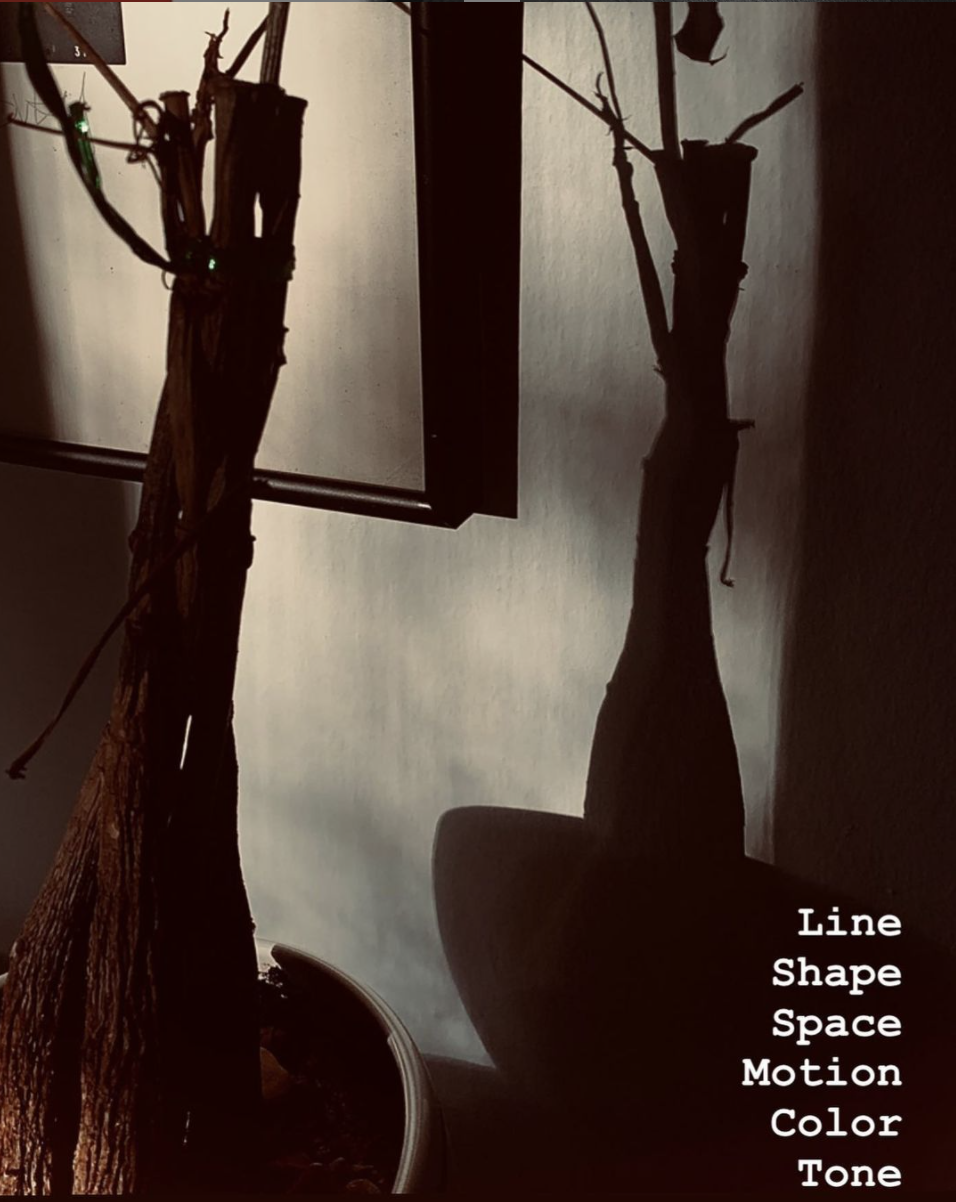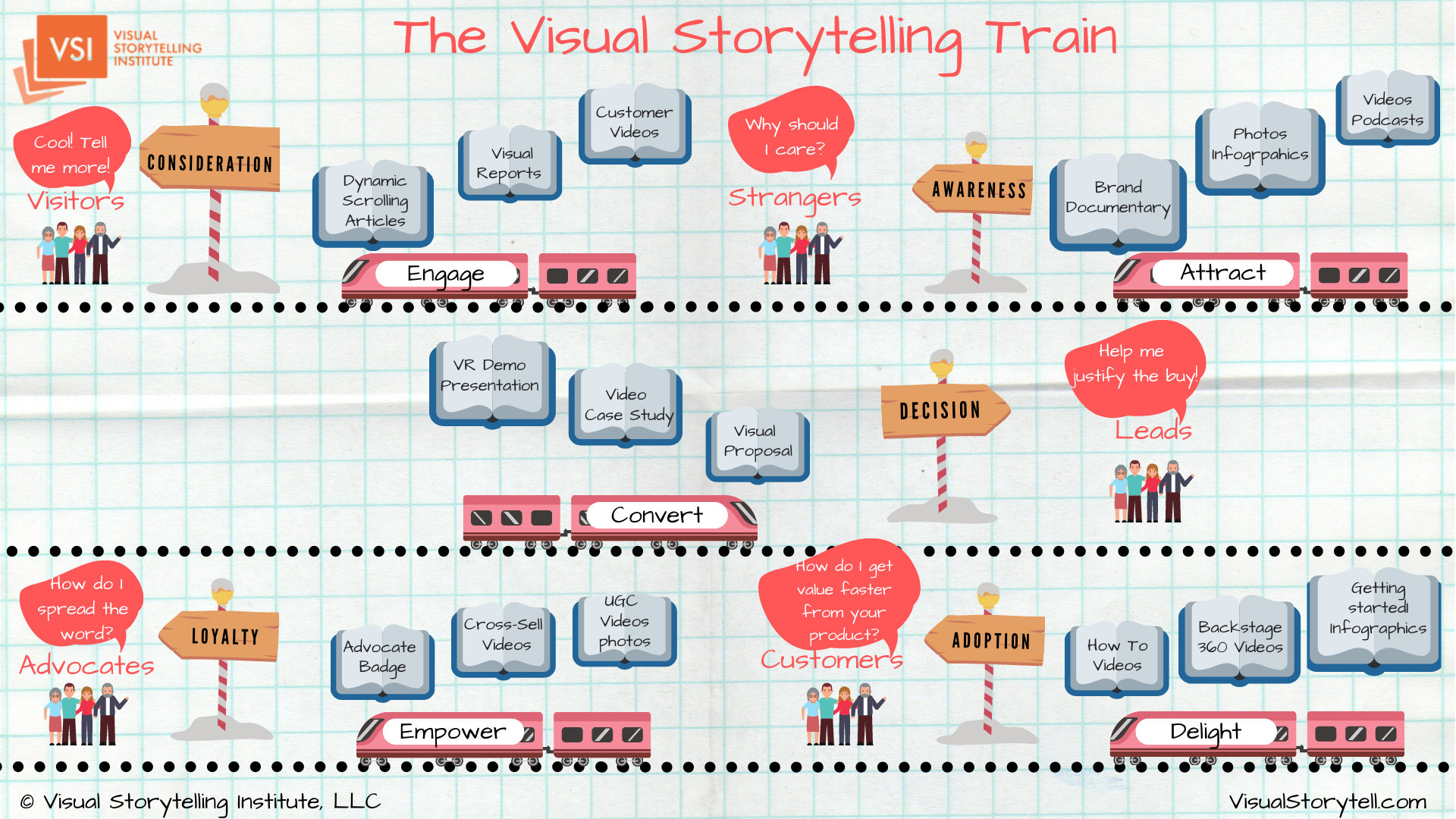
How to Create a Visual Storytelling Language?
How to Create a Visual Storytelling Language? https://www.visualstorytell.com/wp-content/uploads/2021/01/Visual-Storytelling-Language_thumb.png 366 222 Shlomi Ron Shlomi Ron https://secure.gravatar.com/avatar/995c0cf093380b90c7704fda398c9addf4e5c605afbc92af5c3f01f67d65aa41?s=96&d=mm&r=g
What is your visual storytelling language for your brand?
First, off I bet you may be wondering…
What is a Visual Storytelling language?
“A visual storytelling language is a set of rules that define the visual design components and story types a brand uses to create consistent, recognizable and memorable customer experiences across channels in order to capture attention, drive emotional empathy, trust and business results.”
-Shlomi Ron
CEO, Visual Storytelling Institute
Unlike text, that comes with a very concise grammar – set of rules – to convey meanings, visual language or grammar has clear principles but is more fluid.
Having said that, text requires you to learn how to speak the language, whereas visuals require no translation for figuring out objective meanings.
Case in point, if you show your friend in Kansas and in your friend in Rome a photo of a cat- they’ll both identify the photo’s objective meaning. Yes, it’s a cat!
It’s about researching and then targeting the subjective meanings your audience assign to your visual content, using the right visual storytelling language to drive long-term engagement.
Let’s look what’s under the hood of a visual storytelling language.
1. Visual Design
 The six visual design components that are part of any visual storytelling language (Pixar).
The six visual design components that are part of any visual storytelling language (Pixar).
If we focus strictly on visual content such as photos or videos and completely ignore any textual information, Pixar identifies 6 design components that allow you to define your visual language and convey meanings:
Line: thick vs. thin; erratic vs. mild.
Shape: round vs. boxy.
Space: Foreground vs. mid-ground vs. background.
Motion: Stationary vs. in motion objects.
Color: There is a whole meaning taxonomy assigned to each color, including cultural variance.
Tone: low vs. medium vs. high contrast.
Each choice you make with the above 6 components, will project different meanings that need to align both with your audience and your brand.
When you do your homework and know what subjective meanings your audience assign to visual content in the context of your product, you can then start defining your own visual language.
It then becomes part of your official brand book your team follow to bring to life your brand narrative. For example, see photography guidelines for Starbucks vs. Uber.
Can you see the visual language I use on VSI’s Instagram?
Don’t underestimate the power of your visual language because in essence, we’re all natively wired to focus first on the visual and only then the text.
This is true on any platform you publish your visual stories on, and it’s practically how you set your first impression.
2. Story Types
After you’ve done a thorough research and have clear buyer persona profiles, and a crisp brand narrative statement – that brief statement that effectively captures your brand promise or why your audience should care about your business – then you can start plan your content plan and visual stories (e.g., photos, videos, infographics etc.).
However, I can’t stress this enough, to ensure your content plan and stories are on target, you first need to run a solid content audit:
a) Establish your business goals. Why are you creating this content?
b) Research Your Audience. Refer to findings you captured in your Buyer Personal profiles.
c) Map out stages and experiences of your Buyer’s Journey.
d) Research your competition’s content. Look for weaknesses, strengths and opportunities.
e) Research your own content and figure out what works and what doesn’t.
Your findings from the all the above sources will guide you towards creating meaningful visual stories that celebrate that sweet spot between what your customer wants and what your brand wants.
The Visual Storytelling Train is my way of visualizing the various story types you can tell your audience at each stage of their buying journey. Keep in mind, the journey is not sequential as people can skip stages, particularly at the top of the funnel.
For example, if your best friend recommends you a product you urgently needs, you may skip Awareness and Consideration and jump right into Decision.
Also, your story types could be completely different from the ones you see below. Your research will guide you to what particular stories your audience is expecting at each stage.

Check out VSI’s Brand Storytelling Train – a 5-part Instagram Live program, where I discussed the above story types you can tell.
3) Content Planner
Once you’ve created your visual stories you want to document them in your Content Planner where you specify the asset by publishing date and owner. This way, you have a visual central command of all your assets and one place to schedule their release from.
4) Visual Storytelling Guidebook
After you published your visual stories, analyze your campaign performance and update your Visual Storytelling Guidebook:
- Main brand story deck (your Brand Narrative, voice, archetype, values, colors, logos etc. )
- Storytelling guidelines (who, how, when, and where to tell the story)
- Storytelling elements (character, plot and conclusion definitions)
- Storytelling techniques (brand story types, tones, target emotions, and channels to tell the story)
- Storytelling resources (available training and materials)
I hope I was able to spark your interest to start shaping your own visual storytelling language, if you haven’t done so yet. Feel free to reach out of you have any questions.
Need help optimizing your team’s visual storytelling language to emotionally move your audience? Feel free to schedule a conversation!
- Posted In:
- Story Making
- Story Visualizing
- Visual Storytelling
Shlomi Ron
Shlomi Ron is the founder and CEO of the Visual Storytelling Institute, a Miami-based think tank with a mission to bring the gospel of visual storytelling from the world of art to more human-centric and purpose-driven marketing. A digital marketing veteran with over 20 years of experience working both on the agency and brand sides for Fortune 100/500 brands such as Nokia, IBM, and American Express. He started VSI to combine his marketing expertise with his passion for visual stories stemming from his interests in classic Italian cinema and managing the estate of video art pioneer, Buky Schwartz. At VSI, he helps brands rise above the communication noise through visual storytelling consulting, training, and thought leadership. Select clients include Estée Lauder, Microsoft, and Cable & Wireless – to name a few. He currently teaches Brand Storytelling at the University of Miami’s Business School. Thought leader and speaker at key marketing conferences. He is also the host of the Visual Storytelling Today podcast, which ranks in the top 10 best business storytelling podcasts on the Web. His book: Total Acuity: Tales with Marketing Morals to Help You Create Richer Visual Brand Stories. Outside work, he is a nascent bread baker, The Moth fan, and longtime fedora wearer likely to jive with his classic Italian cinema interest.
All stories by: Shlomi Ron1 comment
This site uses Akismet to reduce spam. Learn how your comment data is processed.


Leave a Reply